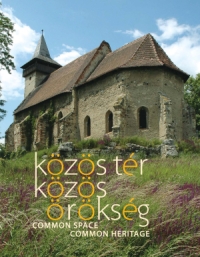Common Space – Common Heritage
Rebirth of Architectural Heritage in the Carpathian Basin

Hungarian art history has long grappled with the fact that most of the best preserved historic monuments have survived in areas outside the central part of historic Hungary which was occupied and heavily devastated during the Ottoman Turkish period in the 16th and 17th centuries, which are to be found in neighbouring countries since 1920. These complexes have had to suffer nationalizing or communist policies of successor states on occasion and their survival has largely depended on the care of the local Hungarian, German, Armenian, etc. communities and their very limited financial means. As minority ethnic areas become smaller at an ever increasing pace, a number of architectural achievements decay in a state of abandonment.
The Hungarian government announced the launch of the National Heritage Program in 1998. In ten years an amount of roughly 7,5 million dollars was spent on restoring approximately 300 architectural monuments related to Hungarian cultural history located outside of the current borders of the country. Subsidies were mainly directed towards archeological studies, professional conservation, restauration and preservation efforts, but also included at times funding earmarked for making future use of monument buildings possible. The exhibition was conceived on the basis of this work, seeking to offer a glimpse into the wealth of architectural monuments bearing witness to the cultural history of centuries past.

